Best Transcription Apps for Free Audio to Text
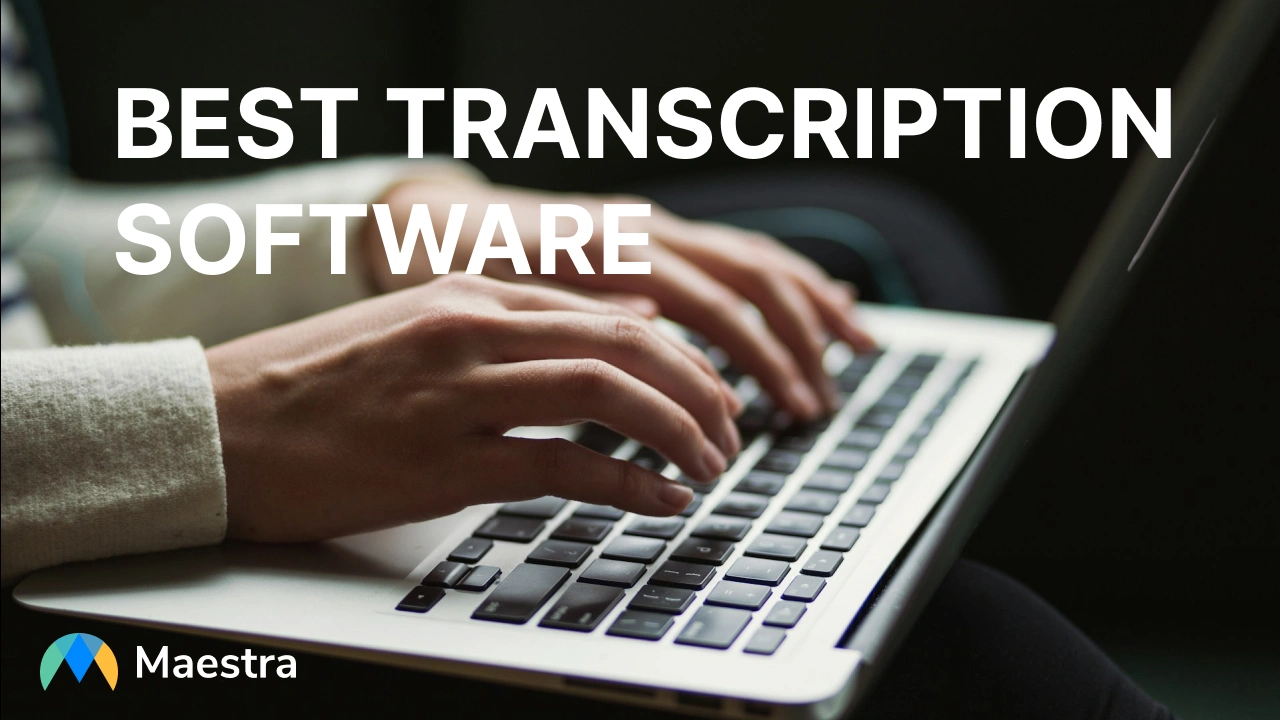
As someone who regularly uses transcription tools for work and content creation, I know how essential they are for boosting productivity. From recording interviews and meetings to generating subtitles and translations, today’s AI-powered transcription apps make the process faster and more accurate than ever. So let's get to it by comparing the pricing, pros & cons, and unique features that the best transcription software provides.
How to Find the Best Transcription Software
Before diving into specific apps, here are the most important factors to consider:
🎯 Accuracy – Does it handle accents, background noise, and multiple speakers?
⚡ Speed – Real-time transcription vs. post-upload processing.
🌍 Languages supported – Essential for global users.
✍️ Editing tools – Speaker identification, timestamps, and easy correction.
🔗 Integrations – Works with Zoom, Google Meet, Dropbox, or your workflow.
📂 Export options – TXT, DOCX, SRT, VTT, PDF, etc.
💰 Pricing – Free tiers, pay-as-you-go, or subscription.
🔒 Security – Confidentiality and compliance with data protection laws.
Best Transcription Apps Reviewed
1. Maestra AI
.webp)
As part of Maestra AI, it is one of the best and most complete transcription apps on the market. You can transcribe audio to text on demand or in real time using the best AI transcription technology possible. Whether you want to live transcribe a conversation or convert audio files to text, it will get the job done fast with incredible accuracy. With advanced collaboration features and integrations, it streamlines your workflow by quite a bit.
Pros
- Leading AI platform with unique real time solutions like live dubbing and voice cloning
- Clean, user-friendly web interface & advanced collaboration options
Cons
- You need a subscription to use unique features such as live translation
2. Otter.ai
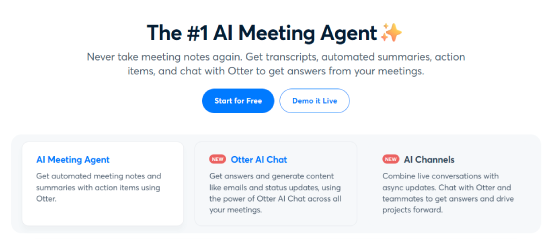
Using Otter.ai during Zoom meetings was super smooth. It picked up speaker changes, even handled overlapping voices quite gracefully, and generated a neat transcript with speaker labels and timestamps. The AI summary and keyword highlights made reviewing the meeting super efficient.
Pros
- Excellent real-time transcription and integration with Zoom, Google Meet, and Microsoft Teams
- Generates AI summaries and keyword “word clouds” that help you quickly find important parts of a conversation
Cons
- Limited language support—mostly English, Spanish, French—so not ideal for broader multilingual need
- Some premium features (bulk export, advanced playback) are gated behind higher-tier plans
3. Rev
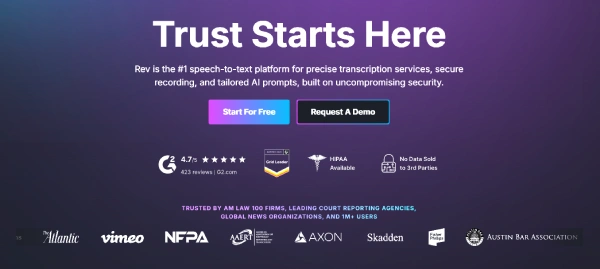
I tested Rev by uploading a short podcast clip. I opted for the human‑powered transcription, and the result arrived in under a few hours with near-perfect accuracy—tight punctuation, speaker tags, even timestamps in the clean transcript editor.
Pros
- Industry-leading accuracy—99% or better using human transcription, ideal for legal or academic work
- Offers both quick AI and highly accurate human transcription, giving flexibility on speed vs. precision
- Intuitive interface and support for many file types; good for professional workflows
Cons
- Human transcription is noticeably more expensive than AI alternatives
- Turnaround time is slower for human transcription—less convenient for quick-first-draft needs
4. Descript
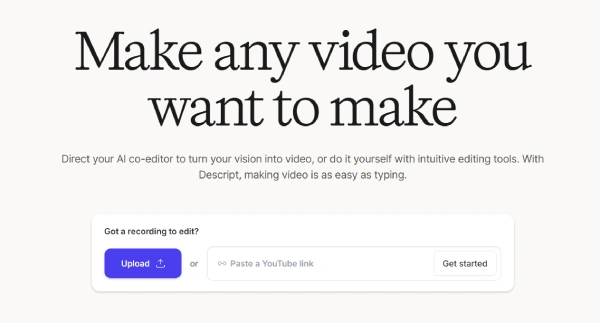
Descript was a game-changer when I needed to transcribe and edit a video interview. The interface lets you cut video by editing transcript text—literally delete words and the video/audio trims accordingly. Voice cloning (Overdub) was fun to try, though setup took some time.
Pros
- Combines transcription with powerful audio/video editing—cut/paste your media by editing text
- Includes overdub (voice cloning) and text-based editing—great for podcast and video creators
Cons
- Higher learning curve—takes time to master all features
- Can feel resource‑heavy, especially on older or less powerful machines
5. Trint

With Trint, I uploaded multiple interview snippets and found its collaborative editing and export options super handy. The text editor lets me rearrange the transcript like a document and track team comments. It was seamless to export to DOCX or subtitle formats.
Pros
- Strong collaborative editing: teams can work on a transcript like a shared doc
- Offers speaker identification, multiple export formats, and subtitle support
Cons
- Pricing feels a bit steep for light or occasional users
- Accuracy can drop if audio is complex—heavy accents or noise can trip it up
6. Happy Scribe
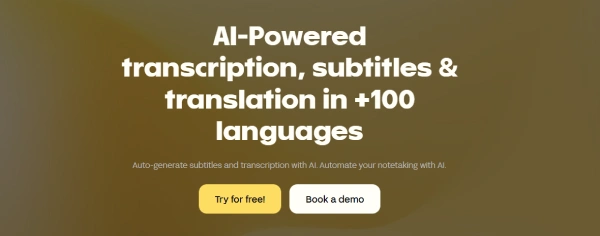
Happy Scribe was great on a multi-speaker panel discussion, it gave me a nice editable transcript, followed by auto-generated subtitles. The language support was impressive, and I could export in SRT, TXT, or Word—super handy.
Pros
- Supports 120+ languages, ideal for subtitle-heavy or international use cases
- Clean interface with subtitle generation and multiple export options
Cons
- Accuracy can vary depending on audio quality; formatting quirks can occur
- Customization of subtitle formatting is a bit limited compared to dedicated video editors
7. Sonix
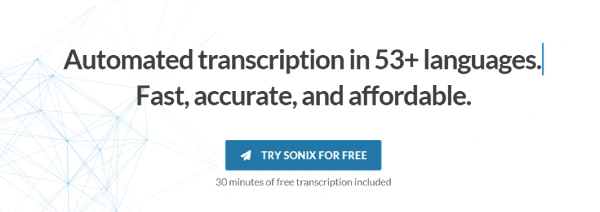
I tried Sonix with a series of industry-style webinars—audio that had both accents and technical jargon. The AI transcribed with exceptional speed and accuracy—actually close to 99%—and it neatly separated speakers and preserved structure even in dense content. Post-transcription, the summary tools like topic detection and sentiment tagging were surprisingly useful for quickly grasping the highlights.
Pros
- High accuracy (up to ~99%) on clear, professional audio, including industry-specific terms
- Strong language support (~50+ languages), great for multilingual needs
Cons
- Pricier than some pay-as-you-go alternatives (e.g., ~$5–10/hr depending on plan)
- The interface and options may feel overwhelming for casual or first-time users
8. Verbit
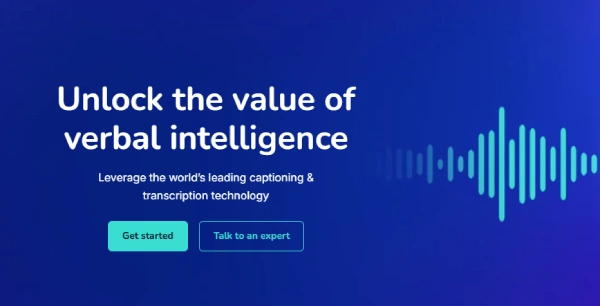
I tested Verbit on academic lecture recordings with various accents and background noise. The AI-first draft was already impressive, but the real magic came when human editors refined it—accuracy shot up after review. The final transcript had great speaker differentiation and contextual correctness—even accounting for lecture-specific terminology.
Pros
- Combines AI transcription with human editing, yielding high accuracy—ideal for enterprise or educational content
- Excellent noise handling and speaker differentiation, even with diverse accents
Cons
- Primarily enterprise-focused, with pricing and setup more suited for institutions than individuals
- Human review adds turnaround time, which might not suit fast-turnaround needs
Honorable Mentions: Best Transcription Software
Sonix: Fast playback and subtitle capabilities, supports around 50+ languages. Great for quick content workflows, but can be pricier.
Temi / SendShort / Notta: Affordable options for basic transcription or multilingual support—with varying limitations. Fast, but less polished for heavy users or complex content.
Comparison Table: Best Transcription Apps in 2025
Quickly compare the best transcription apps by taking a glance at the comparison table.
| Tool | Experience Highlights | Best Use Cases |
| Maestra | Multilingual live transcription + translation + dubbing; intuitive editor | Global content creators, educators, businesses |
| Otter.ai | Smooth live meeting capture, AI summaries, collaboration features | Professionals, students, remote teams |
| Rev | Human + AI options; near-perfect accuracy with human review | Legal, academic, journalism, high-stakes work |
| Descript | Edit audio/video by editing text; overdub voice cloning | Podcasters, video producers, media creators |
| Trint | Collaborative editing, speaker ID, versatile export formats | Media teams, researchers, newsroom workflows |
| Happy Scribe | Supports 120+ languages; easy subtitle generation & export | International media, multilingual projects |
| Sonix | High (~99%) AI accuracy; summaries, sentiment & topic tagging | Enterprises, multilingual teams, researchers |
| Verbit | AI + human editing; excellent with accents & noisy recordings | Enterprises, education, accessibility services |
| Other Mentions (Temi, Scribie, Notta, etc.) | Affordable, simple transcription options | Casual users, budget-conscious transcription |
Which Transcription App Is Right for You?
🎓 Students & professionals: Otter.ai for affordable real-time transcription.
🎥 Content creators: Descript or Sonix for editing + transcription workflows.
🌍 Businesses with multilingual needs: Maestra or Happy Scribe.
🏛️ Accuracy-critical fields: Rev or Verbit for human-level precision.
💸 Budget-conscious users: Temi or Scribie.
Conclusion
Transcription apps in 2025 are more powerful than ever—AI has made them faster, cheaper, and smarter, while human-assisted services remain the gold standard for absolute accuracy. The right choice depends on your priorities: speed, cost, languages, or professional precision.
No matter your field—whether you’re a student, journalist, podcaster, or enterprise—there’s a transcription app here that will fit your needs.
FAQ
What is the best transcription software?
The best transcription software depends on what you’re looking for. If you want a powerful all-in-one platform with multilingual support, Maestra is a top choice. For real-time meeting transcription, Otter.ai is highly effective. If accuracy is your top priority, Rev and Verbit stand out thanks to their human-assisted transcription. Content creators, on the other hand, often prefer Descript or Sonix because of their editing capabilities alongside transcription.
Does ChatGPT do transcription?
ChatGPT itself does not transcribe audio recordings directly. However, when combined with tools like Whisper AI from OpenAI or third-party apps such as Maestra, Otter.ai, or Sonix, you can first generate an accurate transcript and then use ChatGPT to refine, summarize, or analyze the text. This makes ChatGPT a valuable companion tool, even if it is not a dedicated transcription service.
Which software is used for transcription?
There are many different transcription platforms available today, each tailored for specific needs. Otter.ai is widely used in meetings and classrooms, while Rev is popular for professional environments that require the highest possible accuracy. Descript is a favorite among podcasters and video creators because it allows text-based editing alongside transcription. Maestra is especially popular for those who also need translation and dubbing, while Happy Scribe is often chosen for multilingual subtitle workflows.
Is there a free transcription software?
Yes, there are several transcription apps that offer free options. Maestra Live has unlimited free real-time transcription. Otter.ai provides a free tier that gives users several hundred minutes of transcription every month. Sonix and Maestra both offer free trials to test their transcription features before committing to a paid plan. For those who prefer an open-source option, Whisper AI from OpenAI can be used for free, though it requires some technical setup and isn’t as user-friendly as commercial apps.
Which transcription app is best for podcasters?
Maestra's podcast transcript generator is one of the most popular choices for podcasters because it lets users edit their audio by simply editing the text transcript, which makes editing much faster and more intuitive. It also includes overdub features that allow you to clone your own voice. Sonix is another strong option because it provides quick transcripts and subtitle exports, which are useful for repurposing podcast content for different platforms.
Can transcription apps handle multiple speakers?
Yes, most leading transcription apps can identify and separate multiple speakers, though accuracy may vary depending on audio quality and background noise.
Are transcription apps safe to use?
Reputable transcription services take security seriously, using encryption to protect your files and complying with major privacy regulations such as GDPR. Platforms like Maestra, Rev, and Verbit are trusted by businesses and institutions because they meet professional data protection standards. That said, if you’re working with highly sensitive material, it’s always wise to check the provider’s security policies before uploading recordings.

